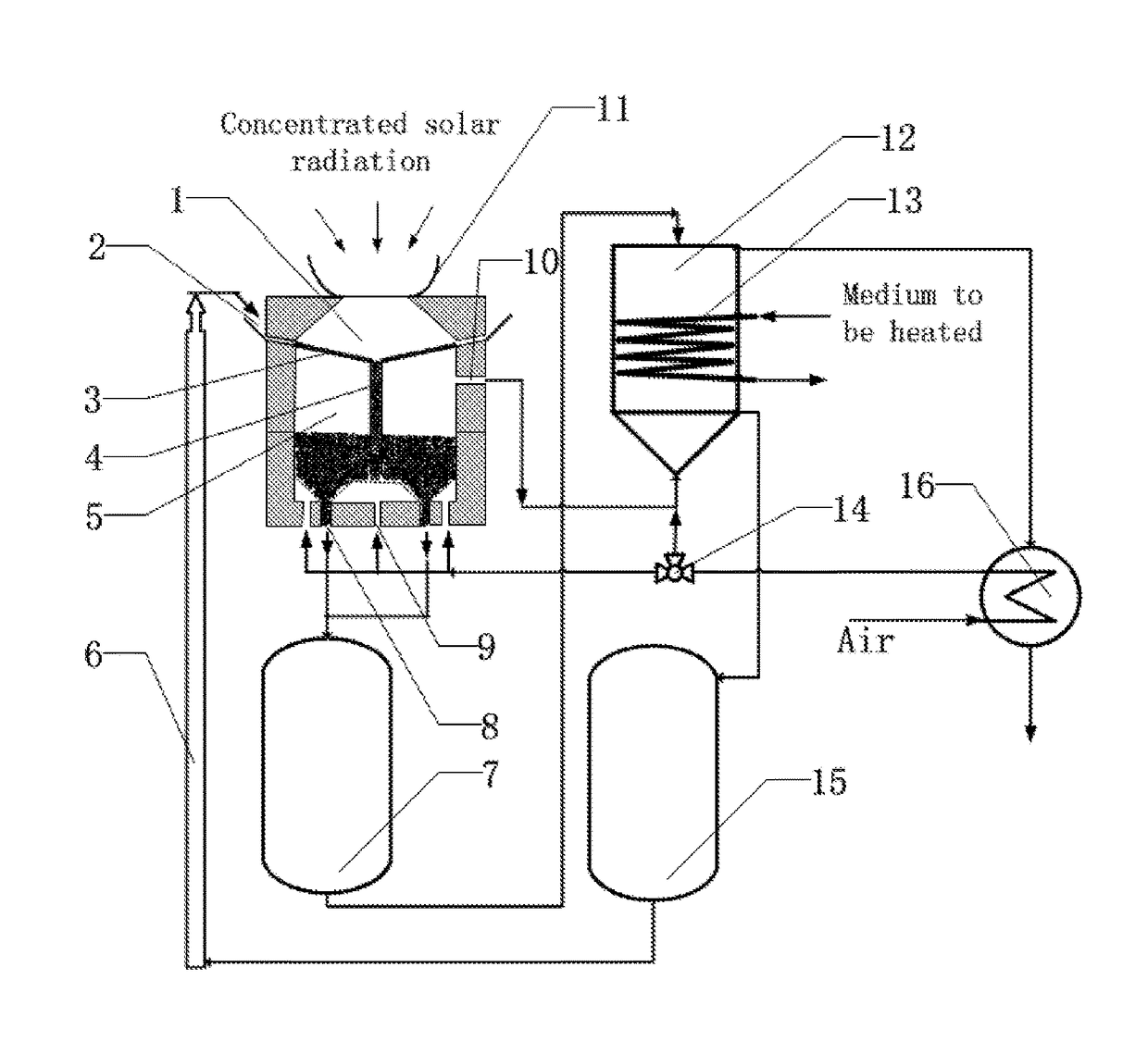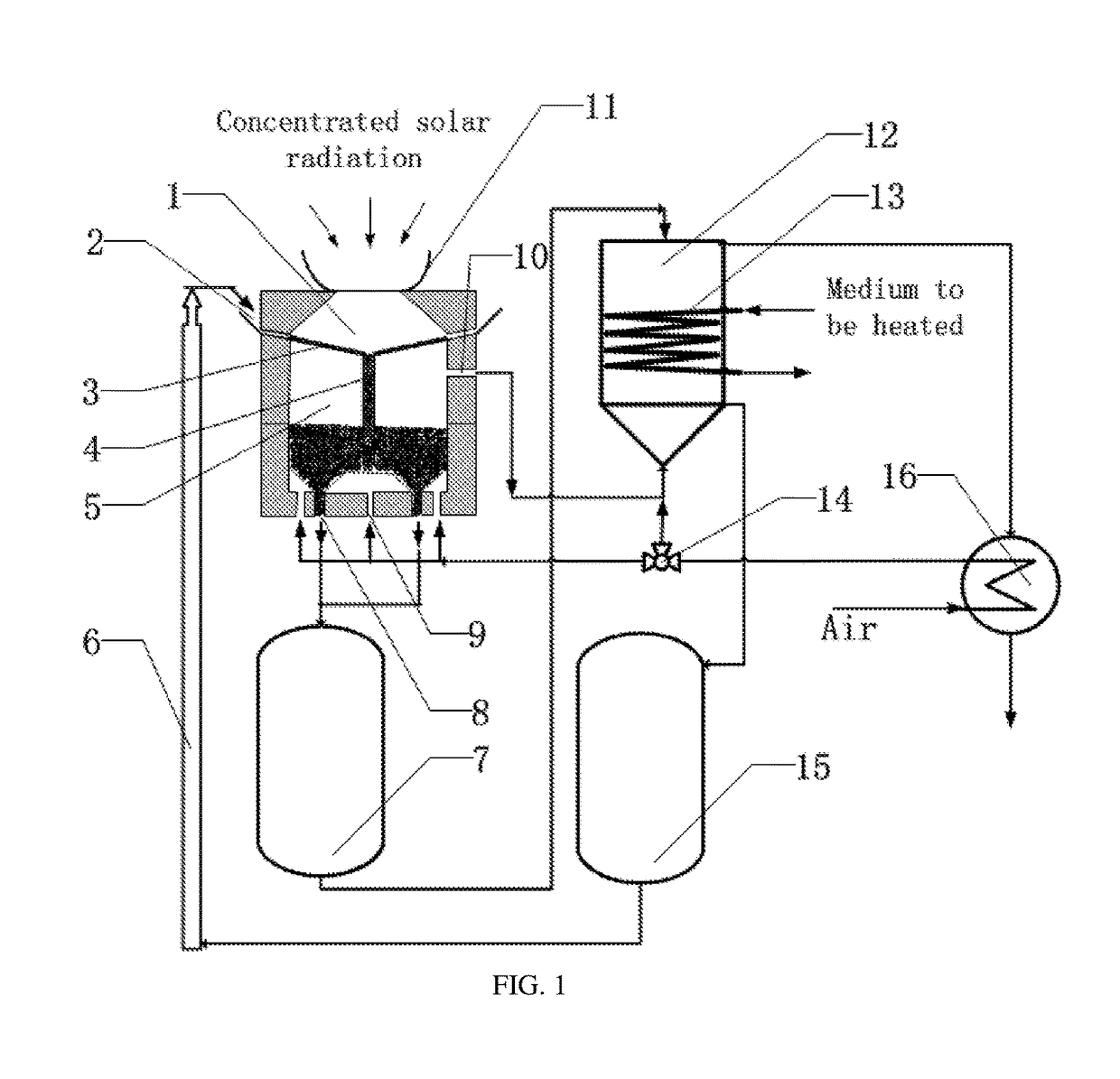Dual-cavity method and device for collecting and storing solar energy with metal oxide particles
- Summary
- Abstract
- Description
- Claims
- Application Information
AI Technical Summary
Benefits of technology
Problems solved by technology
Method used
Image
Examples
Embodiment Construction
[0013]The following reference numerals are used in FIG. 1:
[0014]a light receiving cavity 1,
[0015]a light receiving cavity particle inlet 2,
[0016]a separating plate 3,
[0017]a particle downcomer 4,
[0018]a reacting cavity 5,
[0019]a particle conveyor 6,
[0020]a reduced particle storage tank 7,
[0021]a reacting cavity particle outlet 8,
[0022]a reacting cavity gas inlet 9,
[0023]a reacting cavity gas outlet 10,
[0024]a secondary solar concentrator 11,
[0025]an oxidation heat exchanger 12,
[0026]oxidation heat exchanger pipes 13,
[0027]a three-way control valve 14,
[0028]an oxidized particle storage tank 15, and
[0029]a recuperator 16.
[0030]As shown in FIG. 1, a dual-cavity device for collecting and storing solar energy with metal oxide particles characterized by comprising a secondary concentrator 11, a light receiving cavity 1, a reacting cavity 5, a reduced particle tank 7, an oxidized particle storage tank 15, an oxidation heat exchanger 12, wherein the secondary concentrator 11 is disposed at ...
PUM
 Login to View More
Login to View More Abstract
Description
Claims
Application Information
 Login to View More
Login to View More - R&D
- Intellectual Property
- Life Sciences
- Materials
- Tech Scout
- Unparalleled Data Quality
- Higher Quality Content
- 60% Fewer Hallucinations
Browse by: Latest US Patents, China's latest patents, Technical Efficacy Thesaurus, Application Domain, Technology Topic, Popular Technical Reports.
© 2025 PatSnap. All rights reserved.Legal|Privacy policy|Modern Slavery Act Transparency Statement|Sitemap|About US| Contact US: help@patsnap.com


